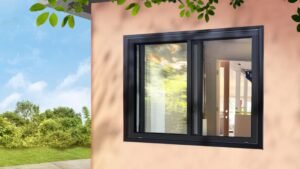
A home is more than just bricks and mortar; it’s a sanctuary where well-being thrives. Yet, the unwelcome presence of mold can jeopardize this haven, affecting both the structural integrity of the dwelling and the health of its occupants. In our comprehensive guide, we unveil seven essential tips for maintaining a mold-free home—a proactive approach to fostering an environment that prioritizes cleanliness, health, and longevity. From the importance of mold testing to practical strategies for prevention, each tip serves as a vital ingredient in the recipe for a mold-resistant living space.
The Importance of Mold Testing:
The first and foundational step in creating a mold-free home is thorough mold testing. Professional mold inspectors utilize specialized equipment to identify hidden mold, assess air quality, and determine the extent of contamination, as The Mold Girl of Savannah explains. This diagnostic process not only unveils existing issues but also guides the formulation of a targeted remediation plan. DIY testing kits, while available, often lack the precision and comprehensiveness of professional assessments. Investing in mold testing ensures a baseline understanding of your home’s mold status, laying the groundwork for effective prevention and remediation strategies.
Maintain Optimal Indoor Humidity:
Mold thrives in damp environments, making moisture control a cornerstone of mold prevention. Maintain indoor humidity levels between 30% and 50% to create an inhospitable environment for mold growth. Utilize dehumidifiers in areas prone to humidity, such as basements and bathrooms, and promptly address water leaks or spills to prevent moisture accumulation. By staying vigilant against excessive humidity, you create an inhospitable environment for mold, mitigating the risk of its proliferation.
Ensure Proper Ventilation:
Proper ventilation is a formidable ally in the battle against mold. Well-ventilated spaces disperse moisture, preventing it from settling and creating conditions conducive to mold growth. Ensure that bathrooms, kitchens, and other moisture-prone areas are equipped with adequate ventilation systems, such as exhaust fans. Regularly inspect and clean ventilation systems to guarantee optimal functionality. The consistent circulation of air not only curtails humidity but also promotes a fresh, mold-resistant atmosphere within your home.
Regularly Inspect and Clean HVAC Systems:
Your home’s heating, ventilation, and air conditioning (HVAC) systems can serve as conduits for mold if not properly maintained. Regularly inspect and clean HVAC components, including air ducts, filters, and coils, to prevent mold spores from circulating throughout your home. Use high-efficiency particulate air (HEPA) filters to trap mold particles, and schedule professional HVAC maintenance to ensure optimal performance. A well-maintained HVAC system not only enhances indoor air quality but also serves as a formidable barrier against mold infiltration.
Promptly Address Water Intrusion:
Water intrusion, whether from leaks, floods, or plumbing issues, provides a breeding ground for mold. Act promptly to address water intrusions, ensuring that affected areas are thoroughly dried and repaired. Swift action minimizes the window of opportunity for mold to take hold. Regularly inspect the roof, windows, and foundation for potential vulnerabilities, and seal any gaps or cracks that could allow water entry. By addressing water intrusion promptly, you create an environment that is resistant to mold colonization.
Use Mold-Resistant Building Materials:
Incorporating mold-resistant building materials can fortify your home’s defenses against mold. Opt for materials like mold-resistant drywall, which contains additives that deter mold growth. Consider mold-resistant paints for areas prone to high humidity, such as bathrooms and kitchens. When renovating or constructing, prioritize materials that are inhospitable to mold, creating an additional layer of protection for your home.
Regularly Clean and Dust:
Routine cleaning and dusting are effective measures in preventing mold buildup. Mold spores can settle on surfaces, especially in areas with limited air circulation. Regularly clean and dust your home, paying attention to often-overlooked spaces such as window sills, corners, and behind furniture. Use mold-inhibiting cleaning products, and consider the use of a HEPA vacuum to capture mold spores during the cleaning process. Consistent cleanliness not only enhances the aesthetic appeal of your home but also disrupts the conditions conducive to mold growth.
In the pursuit of a mold-free home, these seven tips form a comprehensive strategy for maintaining a haven of health and well-being. From the foundational step of mold testing to the practical measures of humidity control, ventilation, and the use of mold-resistant materials, each tip contributes to a proactive defense against mold. Regular vigilance, prompt action, and a commitment to a clean and dry living environment are the cornerstones of a mold-free home. By incorporating these tips into your household routine, you not only safeguard the structural integrity of your dwelling but also prioritize the health and comfort of those who call it home.




